"The panty shot is very traditional in Japan," Nobuyoshi Araki said, "but I don't really like that any longer. Now I want more! more! more!"
Araki was ebullient during the opening of his exhibition at the Taipei Fine Arts Museum. From the press conference to the karaoke outing, he lived the role of the flamboyant art star. At the opening itself, he pranced around like a frolicking satyr in spangled tuxedo tails. His photographs, which are in many ways autobiographical, let people know he has seen a Bacchanalia or two in his time.
Araki, as everybody calls him, is arguably Japan's most important living photographer. He is famous there for television appearances and his eccentric showmanship. He is also critically acclaimed among international art circles. His entrance into the pantheon of high art was confirmed a few years ago when he exhibited with Nan Goldin and Larry Clark, two of the hottest photographers in the New York art scene.

His current show at the Taipei Fine Arts Museum, Araki Alive (until Nov. 28), is the second of four exhibitions that will continue to make the case for his eminence. Araki was allowed his first show at a public Japanese museum, MOT, this spring. Major solo exhibitions in France and Italy will follow next year.
Though the current focus is on Araki the famous artist, he is perhaps more infamous than famous -- as one of Japan's sex photographers. Whether his work is artistic or obscene has been the subject of much controversy. Throughout his 36-year career, Araki has embraced pornography as an almost constant theme, approaching it both as a genre and critical subject matter. In the late 70s and early 80s, his work was featured in magazines like S&M Sniper and Japanese Playboy, and he fueled some of Japan's more illicit fascinations through his first commercial film, Pseudo Diary: Highschool Girls. Throughout the 80s, he documented Tokyo's underground pornography scene in an unforgiving series more telltale than arousing.
As his reputation increased, Araki pushed the limits even further -- often too far for Japanese authorities, who still censor images of genitalia. In 1988, his contributions to the magazine Photo Age led Japanese police to recall an issue on grounds of obscenity. In 1992, he was fined 300,000 yen for an "obscene" gallery exhibition, and in 1993 police arrested gallery workers for selling his book, Erotos.
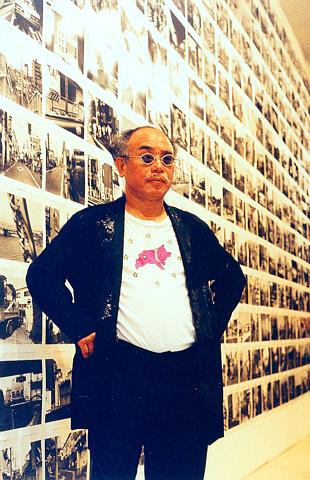
PHOTOS: COURTESY OF NOBUYOSHI
The current exhibit, however, is not concerned so much with the line between obscenity and art. "Araki ALive" is about the photographer as a documenter of his own life. The Araki of this exhibition is one who photographs everything he does and everything he sees.
If the images he displays are coarse, that's because his own experience is coarse. Araki's is a universe of cityscapes, street life, anonymous faces, and, yes, erotic moments. He shows both the beautiful and the banal. Sometimes he even takes the risk of disregarding aesthetics.
In a statement accompanying the exhibition, Araki says, "to keep this thing going for a long time, you just have to carry on taking photographs ... photography is my teacher. The main thing is to keep on taking photographs -- forever and ever." Embracing photography as a way of life also helped Araki cope with the death of his wife, Yoko, in 1990; it gave him the "impulse to carry on.''
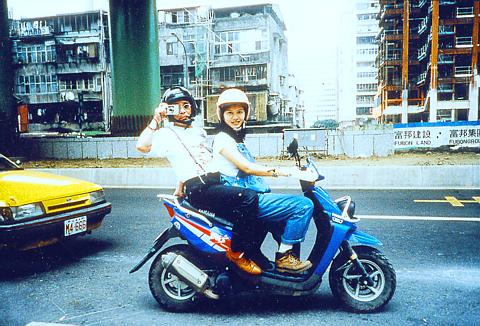
The photos lining the walls of the Fine Arts Museum have come from a recent tour of eight Asian cities, including Taipei. The Taiwan pictures offer a sidewalk view of the island. They include shots from taxis, binglang girls, scooters, male burlesque dancers, traffic, Lee Teng-hui on TV, and naked women. But even though the island is a new location for Araki, the subjects are still the same old inhabitants of Araki's world. As such, there is a tremendous consistency to all the images.
In many ways, the exhibition displays a photographic stream of consciousness. That's why Araki and his curator, Akiko Miki, created special formats for arranging the pictures in groups and clusters. Photographs are displayed in several different ways: large wall-sized grids, horizontal bands, books, CD-ROM, and an eponymous slide show, Arakinema. No image is shown by itself. The pretense that a photograph can objectively describe frozen moments has been discarded. Araki's photographs impress through juxtapositions and sheer volume.
In many ways, seeing this show is like flipping through a pile of photos Araki has just brought home from the lab. It is about how people relate to multiple images, about how single images are losing power in the era of image inundation and one-hour processing. At the same time, however, the pile of photos also implies a more troubling question: how many pictures does it take to capture a life?

With over 100 books to his credit, Araki has still not succeeded in that quest. But there is always more living and photographing to be done. For now, Araki has shown that he is still alive, with all that entails.



The government released figures for October showing that, year on year, exports increased 49 percent to a record US$61.8 billion for the month. The dramatic increases were partly due to fall being the high season, but largely due to the AI boom driving demand for exports, which many investors fear is rapidly turning into a massive bubble. An editorial in this newspaper last month warned that the government should be ready in case the boom turns to bust. In previous boom-bust cycles, from shoes and textiles, through computer parts and accessories, to tools, bicycles and sporting goods, Taiwan has survived in
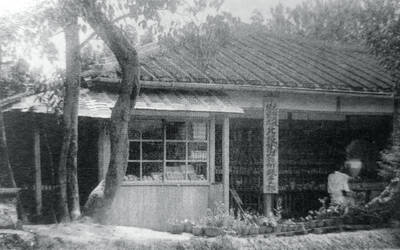
Nov. 30 to Dec. 6 It is said that those who refused to vacate Kipatauw’s upper settlement were knocked unconscious by Japanese agents and dragged to fingerprint the deeds. The Japanese coveted the site’s valuable white clay for Beitou District’s (北投) growing ceramics industry, and they were determined to acquire it by any means. The Indigenous Ketagalan settlement of Kipatauw had withstood centuries of external pressures and cultural erosion. Despite gradually losing much of their territory to Han settlers, they remained distinct into the early 20th century. By 1895, three communities persisted: the upper settlement near
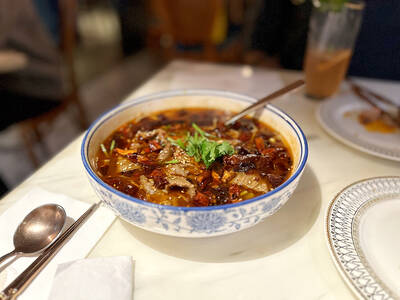
Spicy, scarlet red Sichuan food isn’t normally my suggestion for a first date. But hear me out, if you can both handle a three-chili rating, this spot could be the one. The vibe is intimate and in-the-know cool, the food is fantastic and will spur many a conversation, the cocktail list is wacky and fun — and they do offer free mouthwash in the restroom. Old Seat (老位) is tucked down an unassuming alleyway in the bustling Zhongxiao Dunhua (忠孝敦化) area, warm red lighting and fairy lights leading the way. It’s elegant, overtly hipster and even our table by the
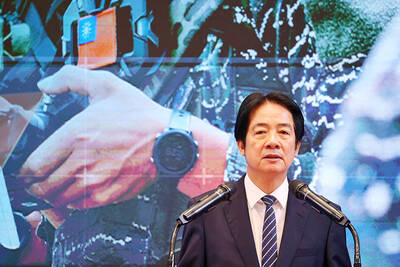
This week, President William Lai (賴清德) and his administration launched a major publicity blitz to drum up support for a proposed NT$1.25 trillion (US$40 billion) special defense budget. This was well-planned and executed, and politically astute, but it is still far from becoming a reality: He needs to convince the opposition-controlled legislature to pass it. The chance that the Chinese Nationalist Party (KMT) and Taiwan People’s Party (TPP) legislative caucuses vote to approve everything that the administration wants is low, but Lai and his team have gone to great lengths to optimize the chances of getting some, or even most